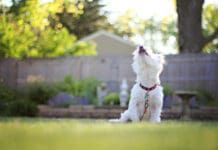Edited by Debra F. Horwitz, DVM, DACVB and John Ciribassi, DVM, DACVB with Steve Dale
The trick with all nuisance behaviors is to train and reward an aopposite or competing behavior. For example, Rowdy can’t jump on Anna if he’s sitting to greet her. He can’t bark at visitors if he has a toy in his mouth, or beg at the dinner table if he is in a down-stay on his bed, or pull on his leash if he’s by Anna’s side making eye contact every five seconds. Whatever bothersome behavior the dog is engaging in, think of something that would preclude it, and train that behavior consistently.
When training any new behavior, especially to replace a well-established nuisance behavior, patience and consistency are key. It can take a while for the dog to give up strategies that have worked for him consistently, but if he is no longer rewarded for them and is instead consistently reinforced for an alternative behavior, he will soon choose that new response every time. Stick with it. Because the unwanted behavior worked in the past, your dog will most likely try it again, but harder, before he will give it up. This is called an “Extinction burst.” It’s a sudden display of a behavior that was diminishing after you stopped rewarding it. It’s sort of like your dog saying, “Was she really serious about that?” Don’t give up; stick with your plan and you will be rewarded.
Training Alternate Behaviors:
- To replace door dashing, train to sit or down before opening the door.
- To replace eating trash off the ground, train to carry a toy or keep eye contact with you.
- To replace barking at the doorbell, train to get a toy.
- To replace digging up the roses, train to fetch or hide-and-seek with dog toys.
- To replace pawing at you, train to put pawing on a cue—so he uses his paw for a “high five” or “wave” when asked.
For additional advice on understanding your dog’s behavior, purchase Decoding Your Dog from Whole Dog Journal.






